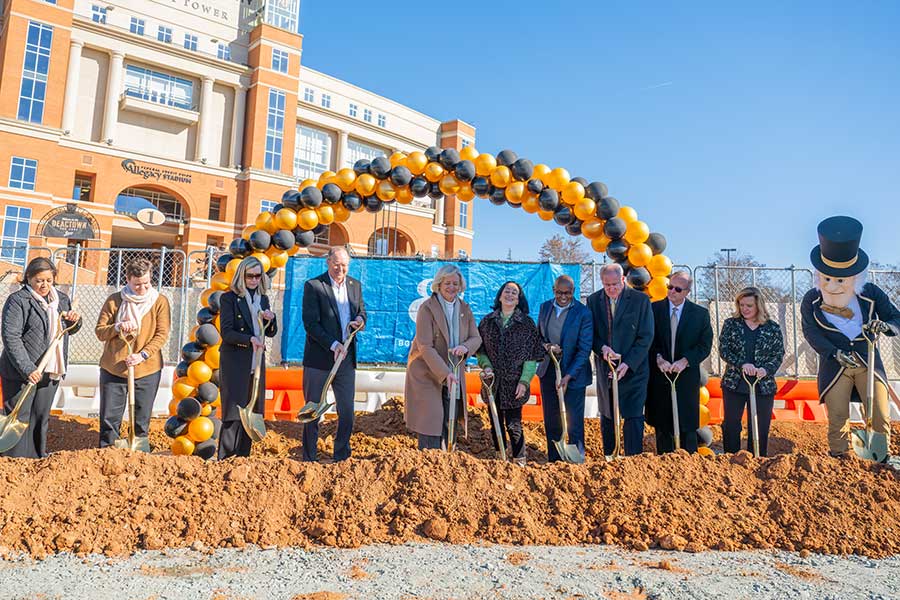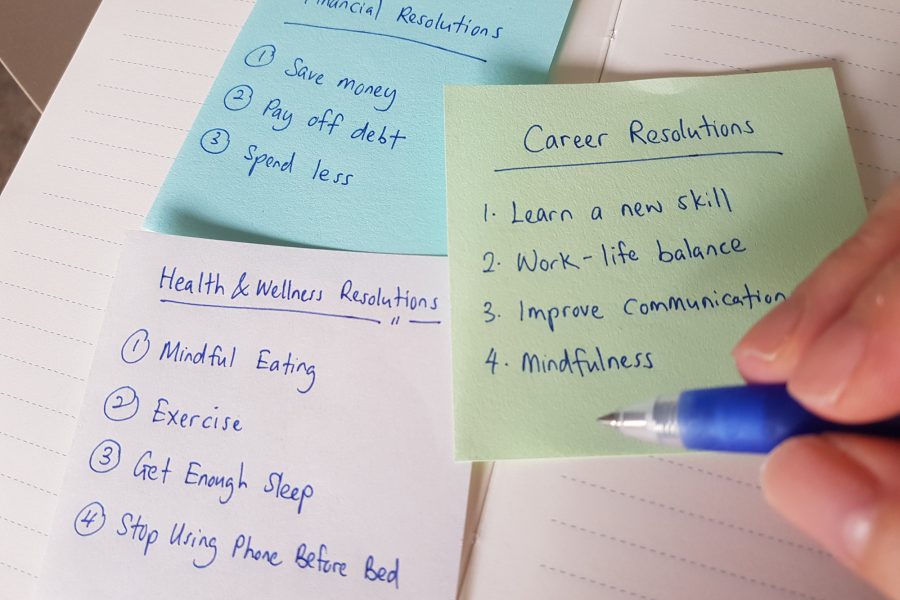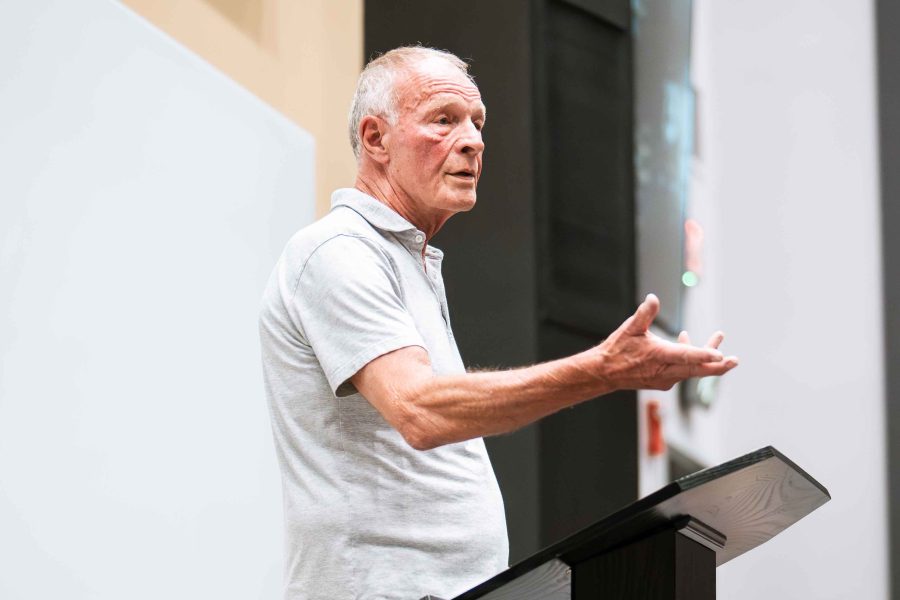We’re putting weighted vests to the test. Here’s what our research shows.
Nearly a decade ago, Kristen Beavers, who studies safe ways for older adults to lose weight, began asking whether weighted vests could help this population drop pounds without sacrificing vital bone mass and lean muscle. Now, in 2025, she routinely gets requests from national media, community groups and individuals interested in better ways to work out.
A professor of internal medicine, section of gerontology and geriatric medicine, at Wake Forest University School of Medicine and research professor of health and exercise science at Wake Forest University, Beavers received a $2.9 million grant from the National Institute on Aging in 2020 to study the ability of a weighted vest worn during weight loss to minimize bone loss in older adults. INVEST (Incorporating Nutrition, Vests, Education and Strength Training) in Bone Health is one of the largest National Institutes of Health-funded weighted vest research studies to be conducted.
“The impetus behind INVEST was twofold,” Beavers said. “One, we think that the weighted vest can counter the unloading of the bone when people lose weight and the effect on the skeleton. Two, people can do it at home. They don’t have to go to a gym, they don’t have to have a supervised exercise intervention. There’s a scalability aspect to the vest that really makes a lot of sense.”
Here, Beavers explains why weight loss presents a risk for older adults and how weighted vests might help.
What are the risks of weight loss for older adults? Why is studying weighted vests important?
Weight loss in older adults is controversial because we know that when people want to lose weight, they want to lose fat. But some of what you lose is muscle and bone, and this can increase the risk of falls and fractures, which can be really debilitating in this population.
Typically, bone loss starts in our 40s. We lose about a half a percent to 1% per year. It is accelerated for women during menopause, and this is thought to be due to declines in estrogen.
One in three women and one in five men are likely to experience an osteoporotic fracture in their lifetimes. Fractures, particularly when they happen at the spine or the hip, often are associated with increased risk of mortality, loss of independence, social isolation and pain. In fact, many people who experience a hip fracture are likely to die within the next year. If you do survive, you are unlikely to regain your former level of functional independence.
Obesity exacerbates the risk of many chronic conditions, like heart attacks, strokes, peripheral vascular disease, osteoarthritis, and even osteoporosis. We know that weight loss can improve some of these risk factors, but it also causes muscle and bone loss, which can exacerbate age-related loss of muscle and bone, thereby increasing risk of fracture or falls.
We’re seeing weighted vests everywhere right now. Can they help offset some of the risks?
I’m interested in finding safe and effective ways for older adults to lose weight, and I’m particularly interested in minimizing the ill effects of weight loss on the musculoskeletal system. I’ve done trials where we increase the amount of protein in the diet to see if that can mitigate weight-loss-associated bone loss. I’ve looked at different types of exercise–resistance training versus aerobic training. Most recently, we’ve turned to a weighted vest to see if their use can minimize weight-loss-associated bone loss.
For the INVEST study, we used weighted vests to counter bone loss. One of the reasons you lose bone when you lose weight is that you’re unloading your bones. For every eighth of a pound of weight that individuals lost in INVEST, we added an eighth of a pound of weight in their weighted vest and asked them to wear that for about eight hours during their most active part of the day.
Your bones respond to the weight that they’re placed under, and it’s one of the reasons that heavier individuals tend to have greater bone density, up to a point. When you lose weight, you are naturally placing less stress on your bones.
INVEST was a randomized, controlled trial conducted in 150 older adults who were living with overweight or obesity. We looked at 12 months of weight loss alone, with weighted vest use or with resistance training to see if these strategies could help minimize bone loss. While we hoped that replacing lost weight externally or increasing mechanical loading through exercise would preserve bone, our findings show that these strategies alone may not be enough. The initial findings, which were published in JAMA Network Open, underscore the persistent need for alternative strategies to protect skeletal health in aging populations with obesity.
That’s a little different than how many people are wearing weighted vests during a walk in their neighborhood or during a workout, maybe for 30 minutes a day. But the premise of INVEST was based on literature just like that. In the early 2000s, there was a flurry of research publications that looked at using a weighted vest to augment typical exercise. On the whole, they showed that weighted vest use could improve many musculoskeletal parameters, like muscle function and strength, balance and bone density.
So what does help preserve bone mass while you’re trying to drop pounds?
The most tried and true ways to prevent bone loss during weight loss from lifestyle would be progressive resistance training with some degree of impact that will load the bone. We know that higher levels of protein intake during weight loss can also prevent weight-loss-associated bone loss, and making sure that you receive adequate calcium and vitamin D for individuals at high risk of fracture or high risk of bone loss. Certain medications can be helpful, too.
For older adults in particular, I think a weighted vest has been shown to improve balance, which is really important. It can improve knee strength when older adults wear these vests during exercise, even increase or maintain bone density. These are all important outcomes for older adults as they relate to fractures or falls or disability risk.
Your research focuses on older adults—but do the findings apply to everyone?
Mechanobiology and its effect on the skeleton is universal. For younger individuals, this work is especially applicable to those undergoing rapid weight loss. This research underscores the principle that weight loss causes bone loss and muscle loss, and we should be thoughtful about ways to prevent it. That practical, preventive mindset is relevant to clinicians and the public at any age.
For instance, we have a study ongoing right now called STRONG BONES. It is looking at the ability of bisphosphonate medications to minimize bone loss that accompanies surgical weight loss. We also have a study ongoing right now called BEACON, which stands for the Bone, Exercise, Alendronate and Caloric Restriction. This study is looking at the independent and combined effects of bone-loading exercise and bisphosphonate as a way to minimize weight-loss-associated bone loss in older adults who have an indication to lose weight and also are living with low bone mass. The bone loading exercises that we are using in our studies right now involve using a weighted vest to increase impact. We have older adults climb stairs while wearing a weighted vest. We’ll have them do box steps using a weighted vest or heel drops or one-leg hops.
What’s next for weighted vests?
Weighted vests are very practical. They’re scalable. They allow you to exercise in your home, in your neighborhood, doing resistance training without going to a gym. For a lot of individuals, there is a real appeal to that. The value of the weighted vest is that it allows you to sneak loading into activities of daily living.
We did not see a significant effect of weighted vest use in its ability to mitigate weight-loss-associated bone loss in older adults. I think there are a lot of reasons why that could be, and our group is interested in studying those.
We have secondary papers that will be coming off of INVEST, so the story isn’t done. We have some papers that are looking at sensitivity analyses, like was the intervention more or less effective in certain subgroups? We also have a fantastic paper coming out led by a doctoral student in biomedical engineering looking at advanced measures of muscle mass and quality from CT scans; a cardiometabolic paper; and a physical function paper. I think that the INVEST story is really just beginning.



